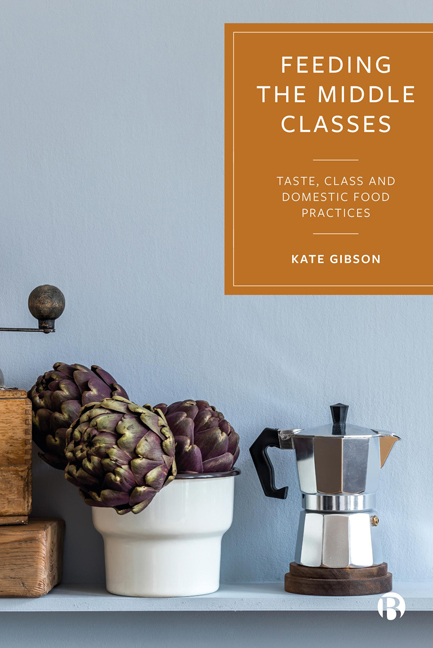Book contents
- Frontmatter
- Contents
- List of Figures and Table
- Acknowledgements
- 1 Introduction
- 2 Class, Consumption and the Domestication of Food
- 3 Talking Food: Classed Narratives, Social Identities and Biographical Transitions
- 4 Homemade Food: Individualized Processes of Household Investment
- 5 Culinary Capital: Knowledge, Learnt Practice and Acquired Taste
- 6 Conclusion
- References
- Index
4 - Homemade Food: Individualized Processes of Household Investment
Published online by Cambridge University Press: 27 March 2024
- Frontmatter
- Contents
- List of Figures and Table
- Acknowledgements
- 1 Introduction
- 2 Class, Consumption and the Domestication of Food
- 3 Talking Food: Classed Narratives, Social Identities and Biographical Transitions
- 4 Homemade Food: Individualized Processes of Household Investment
- 5 Culinary Capital: Knowledge, Learnt Practice and Acquired Taste
- 6 Conclusion
- References
- Index
Summary
The previous chapter explored how tastes (and distastes) in food can be ways of situating the self in relation to another. This chapter looks at the enactment of food choices to examine how classed identity is articulated through doing. Participant biographies drew on notions of abundance and diversity in relation to food availability suggesting that the processes of food choices warrant further analysis. In light of this, I now examine the relationship between choice and the classed positioning of ‘good’ food within the contemporary food terrain. By focusing on practice, I relate the doing of choice to a complex and manifold set of routines, habits, preferences, and systems. I argue that the detailed ways in which participants choose from options to feed themselves and their households can act as a signpost to how they construct their sense of self, both individually and the household as a collective. Therefore, I explore the work done at a household level to manage choice, and the knowledge and skills which inform everyday investments. I scrutinize how these processes reproduce contextualized norms of middle-classness. This forms the basis for the following chapter, which picks up on this relationship in order to analyse participant enactment of familial relationships via food in the home.
To start the chapter, I turn my attention to the ways in which participant understandings of ‘good’ food are grounded in an attempt to ‘decommodify food’ (Wilk 2006: 20; italics original). That is, through the process of cooking and preparing food, participants infuse food with personal, cultural, and social value. The value of food, however, stretches well beyond the immediate domestic work of cooking and preparing food, because it embodies a complex symbolic and material work of controlling and selecting the food which crosses the domestic threshold. I therefore draw on participant experiences of the marketplace to explore these processes of domesticating food. I note that participants’ enactment and resistance of certain processes potentially constructs them as critical and discerning consumers. This is fraught with conflict however as the narratives of the most harried participants of the sample suggest.
The kitchen
To start, I want to first pay attention to how the kitchen functions as a central domestic space for the making and doing of ‘good’ food. Most first interviews and all second interviews occurred in kitchens.
- Type
- Chapter
- Information
- Feeding the Middle ClassesTaste, Class and Domestic Food Practices, pp. 77 - 103Publisher: Bristol University PressPrint publication year: 2023



